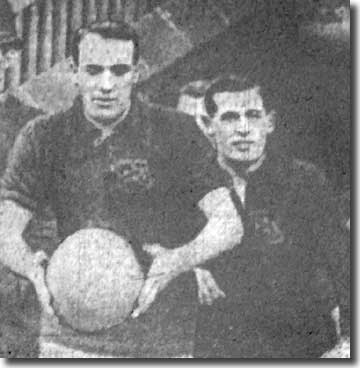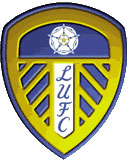 Born:
Grimsby, Lincolnshire, 14 September 1884
Born:
Grimsby, Lincolnshire, 14 September 1884
Tom Morris was a stalwart of the Leeds City team for most of Frank
Scott-Walford's time in charge and survived the transition to Herbert
Chapman's regime. Martin Jarred and Malcolm Macdonald described him
as 'A thoughtful centre-half whom many thought was future management material'.
After beginning his playing career with Haycroft Rovers of the Grimsby
League and then moving on to Grimsby Rovers, Morris secured a deal with
Second Division Grimsby Town in February 1906. He appeared twenty times
in the League and a further twice in the FA Cup before joining Brighton
and Hove Albion in May 1907.
Albion manager Frank Scott-Walford took over at Leeds City early in
1908 and tried unsuccessfully to recruit Morris as one of his first
signings. He was more successful when he returned to Sussex in February
1909 to recruit Morris with the aim of strengthening a porous defence.
Morris' debut for Leeds was not auspicious; City lost 2-0 at home to
Gainsborough on 13 March, prompting Linesman to write in the Leeds
Mercury: 'The Leeds City team seemed the strongest that has done duty
for some time, the inclusion of Morris, the centre-half from Brighton,
being expected to effect a considerable improvement. But everything worked
out contrary to expectation, and Leeds City suffered defeat by two goals
to nil. It should not be inferred from this that Morris was a failure
in his debut for his new club, far from it. He did not play a brilliant
game, nor did he convey the impression that he is a better centre-half
than either Hamilton or Kennedy,
but it would hardly be fair to judge him on Saturday's play, for the entire
Leeds City team was a long way below par, and with all the other parts
of the machine out of gear, so to speak, it could not be expected that
Morris would distinguish himself. He is probably the biggest and broadest
player in the Leeds City team, Jock Watson
not excepted, and if he strikes one as being a trifle slow, he showed
that he knows the art of feeding forwards, his passes being timely and
very accurate.'
The move paid dividends over the next few weeks, however, and City kept
five clean sheets in the nine games Morris played before the end of the
campaign. Not for nothing was he often referred to as the best centre-half
in the Second Division, with his fearsome tackling and heading prowess,
though he was derided for lacking pace and mobility.
Morris continued to form an essential and powerful component of the
City side over the next two seasons and he was appointed captain in
1911/12.
After 106 league and 3 Cup games in just over three years, Morris, now
approaching the veteran stage, departed Elland Road in May 1913 and joined
Scunthorpe & Lindsey United as player-coach, accompanied by winger Hugh
Roberts. Morris remained there for a year and in May 1914 signed for
Coventry City, where he was reunited with Frank Scott-Walford.
The onset of war brought an end to club football for Morris and he
joined the Army in Match 1915. He was killed in action while serving
as a sergeant in the Second Battalion, Lincolnshire Regiment.











 Born:
Grimsby, Lincolnshire, 14 September 1884
Born:
Grimsby, Lincolnshire, 14 September 1884